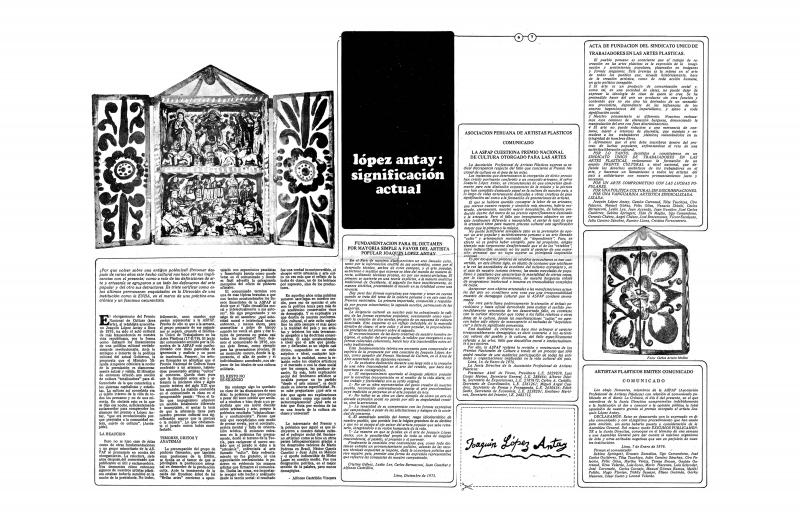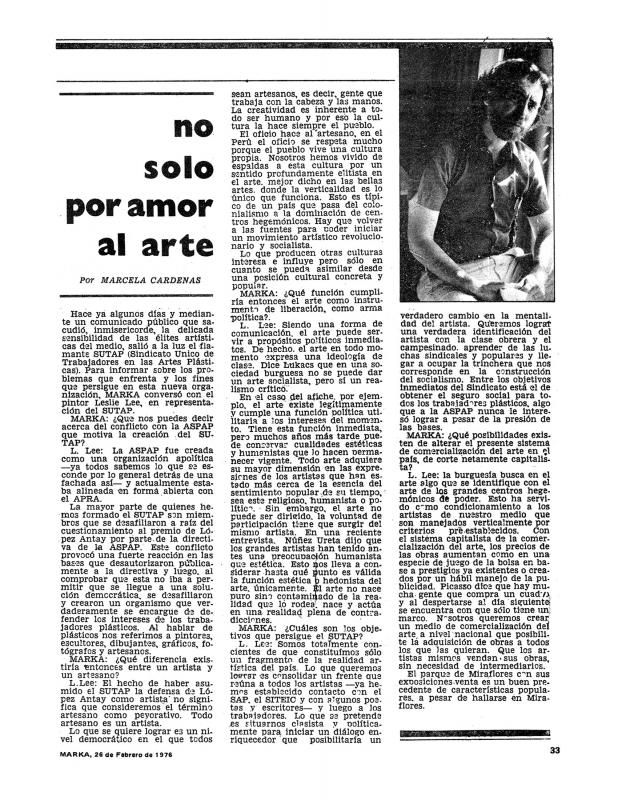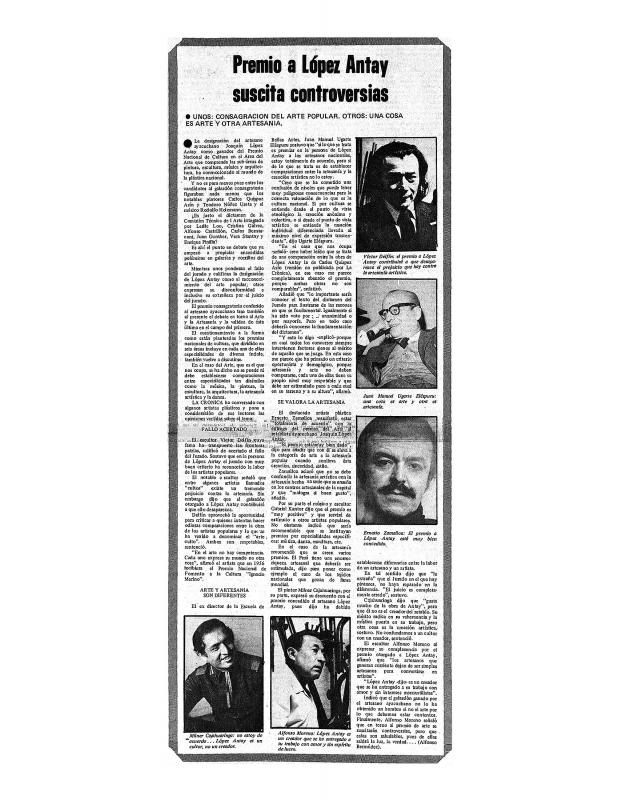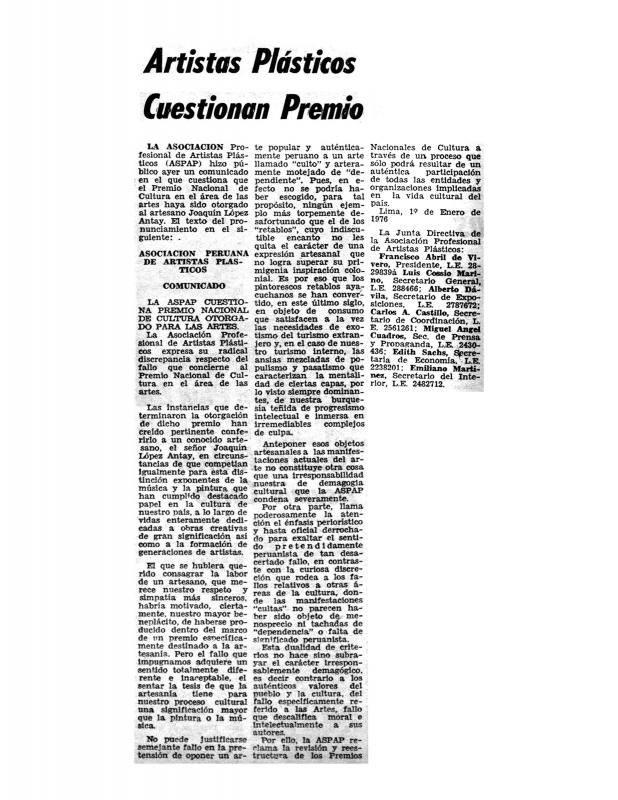This article refers to the communiqué in which ASPAP (Asociación Peruana de Artistas Plásticos) [Peruvian Association of Visual Artists] expressed its disagreement with the jury’s decision, issued on January 1, 1976 (published five days later), and the founding manifesto issued by SUTAP (Sindicato Único de Trabajadores de las Artes Plásticas) [Sole Visual Arts Workers Union] on February 9 (published six days later). The upheaval at ASPAP clearly underscores the artist’s complicated role within a context of government policies that aspire either to a “social revolution” or to the search for an “authentic” national culture. The writer Luis Freire (b. 1945) worked for many years as a cultural journalist and published a number of articles about this debate. He subsequently spoke out in favor of recognizing the value of traditional arts and crafts.
An announcement on December 26, 1975 confirmed that the National Culture Prizes (for the 1973–74 biennium) had been awarded by the Peruvian government through the Instituto Nacional de Cultura to honor the greatest contributions to the development of Peruvian culture. The jury’s decision in the art category (which had traditionally included painting, sculpture, music, and architecture) ignited one of the most heated debates in the history of Peruvian art. The ensuing controversy underscored simmering tensions and suspicions regarding the cultural policies of the revolutionary government of the armed forces led by General Juan Velasco Alvarado (1968–75). This administration claimed to be committed to a progressive agenda, a claim supported mainly by the Agrarian Reform of 1969 which was accompanied by the government’s enthusiastic attempt to glorify the image of the peasant population and lifestyle at the expense of other forms of cultural expression that were considered more “Western.” On this occasion the prize was awarded to Joaquín López Antay (1897–1981), who was chosen over well-known visual artists such as Carlos Quízpez Asín (1900–83) and Teodoro Núñez Ureta (1912–88) and the German-born academic musician Rodolfo Holzmann (1910–92).
[As complementary reading on the subject of SUTAP, see the following articles in the ICAA digital archive: (anonymous) “El arte y el deber social: declara Ciro Palacios, dirigente de los trabajadores de las artes plásticas” (doc. no. 1136396); by A.B.C. “Contra toda manipulación en el arte” (doc. no. 1136349); by Juan Gargurevich “Deslinde en la pintura: progreso vs. reacción” (doc. no. 1136301); by Alfonso Castrillón Vizcarra “López Antay: significación actual” (doc. no. 1136495); (anonymous) “Manifiesto: acta de fundación: Sindicato Único de Trabajadores en las Artes Plásticas” (doc. no. 1136267); and by Marcela Cárdenas “No sólo por amor al arte” (doc. no. 1136333). On the subject of the debate over the Premio Nacional de Cultura [National Culture Prize], see the following articles: by Alfonso Castrillón, Leslie Lee, and Carlos Bernasconi “Fundamentación para el dictamen por mayoría simple a favor del artista popular Joaquín López Antay” (doc. no. 1135896); by Alfonso Bermúdez “Premio a López Antay suscita controversias. Unos: consagración del arte popular. Otros: una cosa es arte y otra artesanía” (doc. no. 1135879); by Francisco Abril de Vivero, Luis Cossio Marino, and Alberto Dávila “Artistas plásticos cuestionan premio” (doc. no. 1135960); and (anonymous) “‘No todos nos quieren ni en Lima ni en Ayacucho’: así comentó sobre cuestionamiento a premio” (doc. no. 1135930)].










